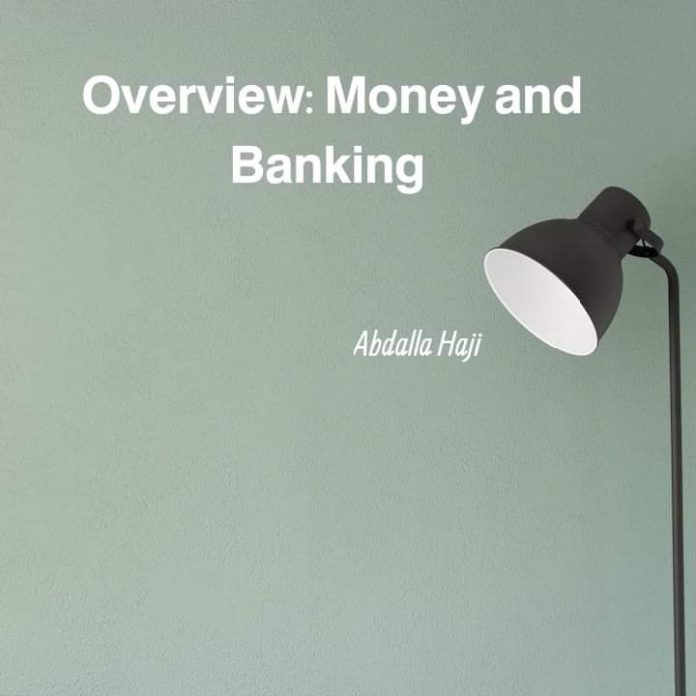Money and banking are the fundamental components of any modern economy. Money serves as a medium of exchange, a unit of account, and a store of value. It facilitates trade and helps in the efficient allocation of resources. Banks are financial intermediaries that help to channel funds from savers to borrowers. They play an essential role in the economy by facilitating credit creation, which drives investment and economic growth.
𝗠𝗼𝗻𝗲𝘆
Money is anything that is widely accepted as a means of payment for goods and services. It is an essential part of the economy because it facilitates trade, enables specialization and division of labor, and serves as a store of value. Money can be in the form of currency, such as banknotes and coins, or deposits in bank accounts.
𝗧𝘆𝗽𝗲𝘀 𝗼𝗳 𝗠𝗼𝗻𝗲𝘆:
•Commodity Money: Money that is made up of a valuable commodity like gold, silver, or copper.
•Fiat Money: Money that has no intrinsic value and is declared as legal tender by the government.
•Electronic Money: Money that exists in electronic form, such as bank deposits and digital currencies.
𝗙𝘂𝗻𝗰𝘁𝗶𝗼𝗻𝘀 𝗼𝗳 𝗠𝗼𝗻𝗲𝘆:
•Medium of Exchange: Money facilitates the exchange of goods and services.
•Unit of Account: Money is used to measure the value of goods and services.
•Store of Value: Money can be stored and used as a purchasing power in the future.
•Standard of Deferred Payment: Money can be used to pay for debts in the future.
𝗕𝗮𝗻𝗸𝗶𝗻𝗴
Banks are financial intermediaries that facilitate the flow of funds from savers to borrowers. They provide a range of financial services, such as deposit-taking, lending, and payment services.
𝗙𝘂𝗻𝗰𝘁𝗶𝗼𝗻𝘀 𝗼𝗳 𝗕𝗮𝗻𝗸𝘀:
•Accepting Deposits: Banks accept deposits from customers and pay interest on them.
•Lending Money: Banks lend money to individuals and businesses for various purposes.
•Payment Services: Banks provide various payment services, such as cheques, credit and debit cards, and online banking.
•Credit Creation: Banks create credit by lending out the deposits they receive, which helps to drive economic growth.
𝗧𝘆𝗽𝗲𝘀 𝗼𝗳 𝗕𝗮𝗻𝗸𝘀:
•Commercial Banks: Banks that provide a range of financial services to individuals and businesses.
•Islamic Banks: Banks that operates in accordance with the principles of Islamic law (Shariah) and prohibits the charging or paying of interest (riba).
•Central Banks: Banks that are responsible for monetary policy and the regulation of the banking system.
•Investment Banks: Banks that provide a range of financial services to businesses, such as underwriting securities and advising on mergers and acquisitions.
•Development Banks: Banks that provide long-term financing for economic development projects.
𝗠𝗼𝗻𝗲𝘆 𝗦𝘂𝗽𝗽𝗹𝘆
The money supply refers to the total amount of money in an economy. It is controlled by the central bank, which uses various monetary policy tools to influence the money supply.
𝗧𝗵𝗲 𝗰𝗼𝗺𝗽𝗼𝗻𝗲𝗻𝘁𝘀 𝗼𝗳 𝘁𝗵𝗲 𝗺𝗼𝗻𝗲𝘆 𝘀𝘂𝗽𝗽𝗹𝘆 𝗮𝗿𝗲:
•Currency in Circulation: Physical currency in the hands of the public.
•Demand Deposits: Deposits in checking accounts that can be withdrawn on demand.
•Savings Deposits: Deposits in savings accounts that cannot be withdrawn on demand.
𝗠𝗼𝗻𝗲𝘁𝗮𝗿𝘆 𝗣𝗼𝗹𝗶𝗰𝘆
Monetary policy is the process by which the central bank influences the money supply and interest rates in the economy to achieve its macroeconomic objectives, such as price stability and full employment.
𝗠𝗼𝗻𝗲𝘁𝗮𝗿𝘆 𝗽𝗼𝗹𝗶𝗰𝘆 𝘁𝗼𝗼𝗹𝘀:
•Open market operations: Open market operations involve the buying or selling of government securities in the open market by the central bank. When the central bank buys government securities, it injects money into the banking system, which increases the money supply and lowers interest rates. Conversely, when the central bank sells government securities, it reduces the money supply and raises interest rates.
•Discount rate: The discount rate is the interest rate at which the central bank lends money to commercial banks. By raising or lowering the discount rate, the central bank can influence the cost of borrowing for commercial banks, which, in turn, affects the interest rates charged by commercial banks to their customers.
•Reserve requirements: Reserve requirements refer to the amount of funds that banks are required to hold in reserve against their deposits. By changing reserve requirements, the central bank can influence the amount of money that banks can lend and, thus, affect the money supply and interest rates.
Compiled and Organized by: Abdalla Haji



































